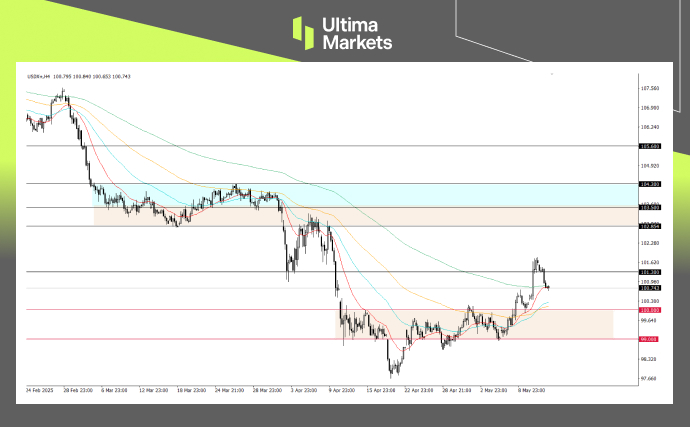April CPI Shows Mixed Signals, Delays Fed Cut Expectations
TOPICSThe U.S. Consumer Price Index (CPI) for April, released on April 13, reflects a continued cooling in inflation on a year-over-year basis, offering some relief to both consumers and policymakers. However, the monthly data tells a different story.
Headline CPI: Consumer prices rose by 0.2% in April, reversing the 0.1% decline in March and surprising markets that had expected a 0.3% drop. On an annual basis, CPI increased by 2.3%, marking the lowest yearly inflation rate since early 2021.
Core CPI: Excluding volatile food and energy prices, core inflation climbed 0.2% month-over-month and 2.8% year-over-year, highlighting persistent underlying inflationary pressures.

April US Consumer Price Data | Source: Ultima Market Calendar
Despite the encouraging annual headline figure, the stronger-than-expected monthly gains raised concerns among investors about sticky inflation and the potential implications for Federal Reserve policy.
Economic Implications: Are Tariff Impacts Yet to Fully Unfold?
The rise in consumer prices during April has reignited concerns that tariff policies may be contributing to inflationary pressures in the U.S.
“Tariffs may not have fully filtered through to consumer prices yet. We could see more upward pressure on inflation in the coming months,” noted an analyst from Ultima Market.
While the recent decision by the Trump administration to ease certain tariffs has helped boost equity markets and ease fears about inflation control, American consumers are still facing historically high overall tariff levels. This suggests that the cost of goods and services may continue to rise.
Despite the partial tariff rollbacks, the lingering effects of elevated import duties could still exert inflationary pressure. More clarity on the true economic impact is expected to emerge in the upcoming May and June inflation data.
Fed Cuts Expectation Delayed
Despite Trump pressing the Fed to cut rates, the Federal Reserve is likely to maintain its current stance until the full effects of trade policies and other economic factors become clear.

Fed Rate Probabilities for July Meeting | Source: CME Group
According to the CME FedWatch, the probability of keeping the rate unchanged at the July meeting (4.25%–4.50%) has risen to 61.4%, up from just 21.9% a week ago. This signals that the market has now pushed back its expectations for a rate cut to September.
US Dollar Dips After CPI, But Bullish Setup Holds
The US Dollar Index (USDX) saw a brief pullback following the release of the April CPI, retreating from the key resistance level at 101.30.

USDX+, 4-H Chart Analysis | Source: Ultima Market MT5
Despite the decline, the broader technical outlook remains constructive. The recent bullish crossover in short-term moving averages supports the ongoing reversal setup. As long as the index holds above the psychological 100-mark, the US Dollar remains technically supported in the near term.
On the fundamental side, the delay in Fed rate cut expectations, coupled with easing tensions in the US-China trade war, could provide further support for the dollar in the near term. These factors may reinforce demand for the greenback, especially as risk sentiment stabilizes.
Disclaimer
Comments, news, research, analysis, price, and all information contained in the article only serve as general information for readers and do not suggest any advice. Ultima Markets has taken reasonable measures to provide up-to-date information, but cannot guarantee accuracy, and may modify without notice. Ultima Markets will not be responsible for any loss incurred due to the application of the information provided.
Why Trade Metals & Commodities with Ultima Markets?
Ultima Markets provides the foremost competitive cost and exchange environment for prevalent commodities worldwide.
Start TradingMonitoring the market on the go
Markets are susceptible to changes in supply and demand
Attractive to investors only interested in price speculation
Deep and diverse liquidity with no hidden fees
No dealing desk and no requotes
Fast execution via Equinix NY4 server









